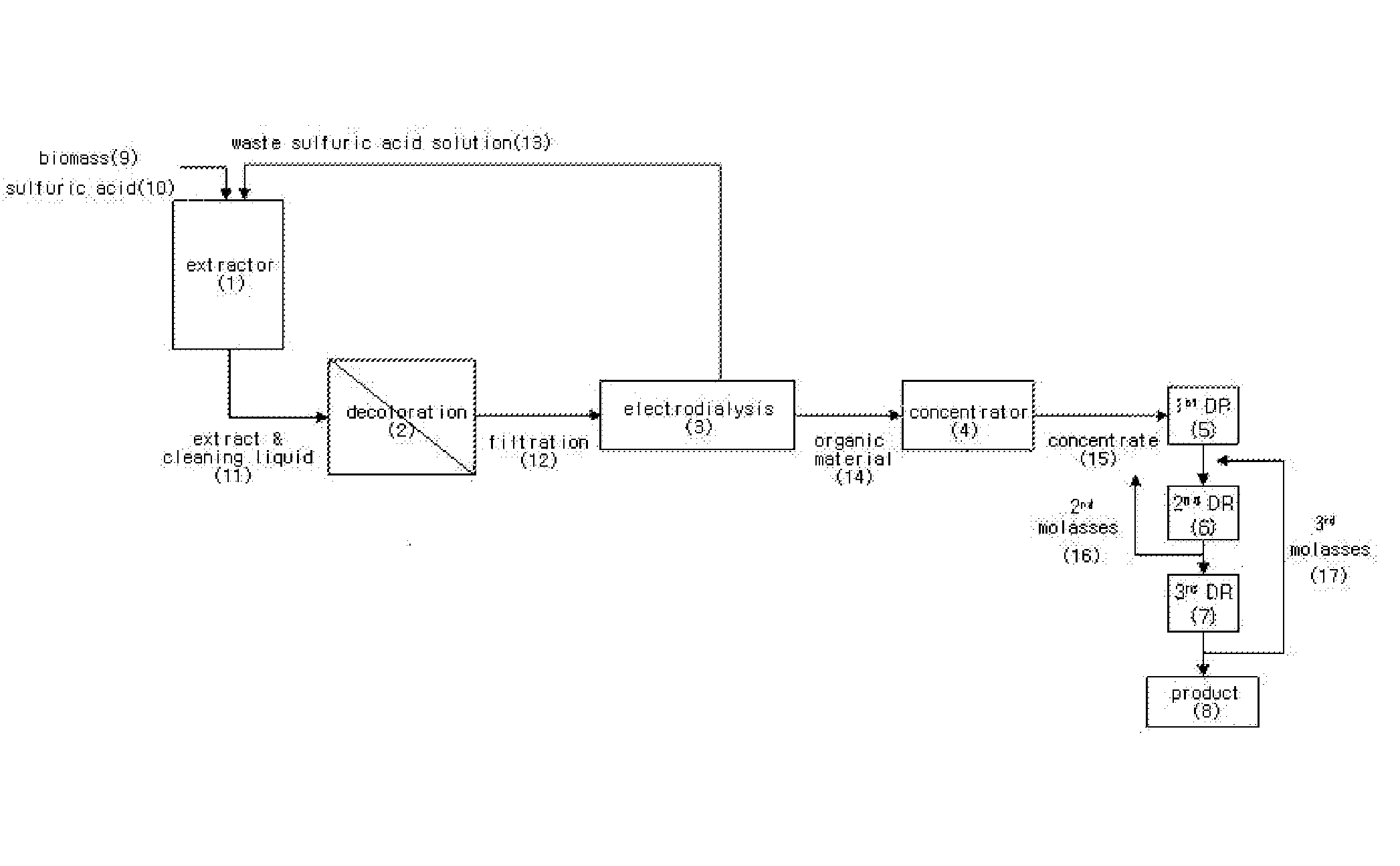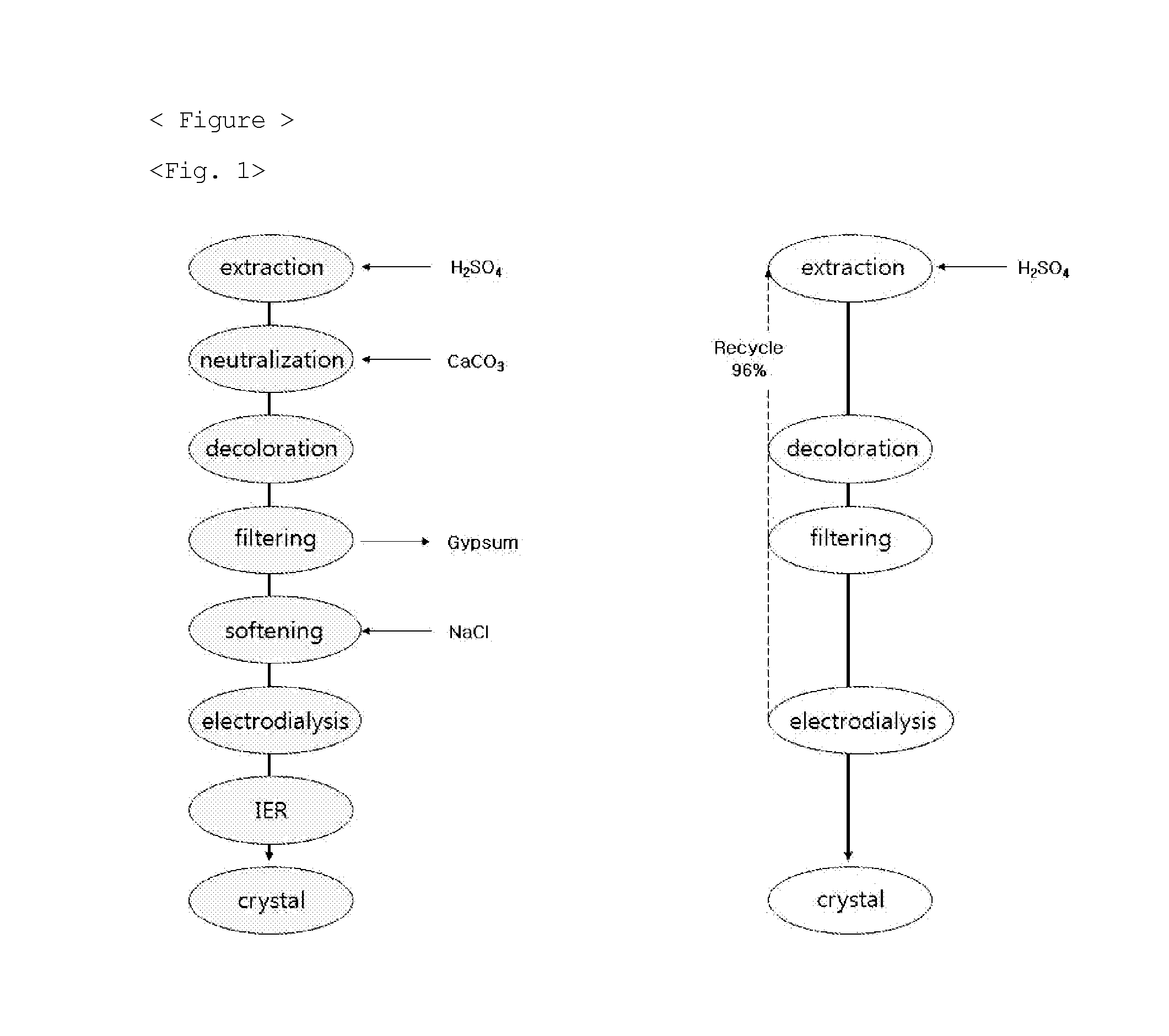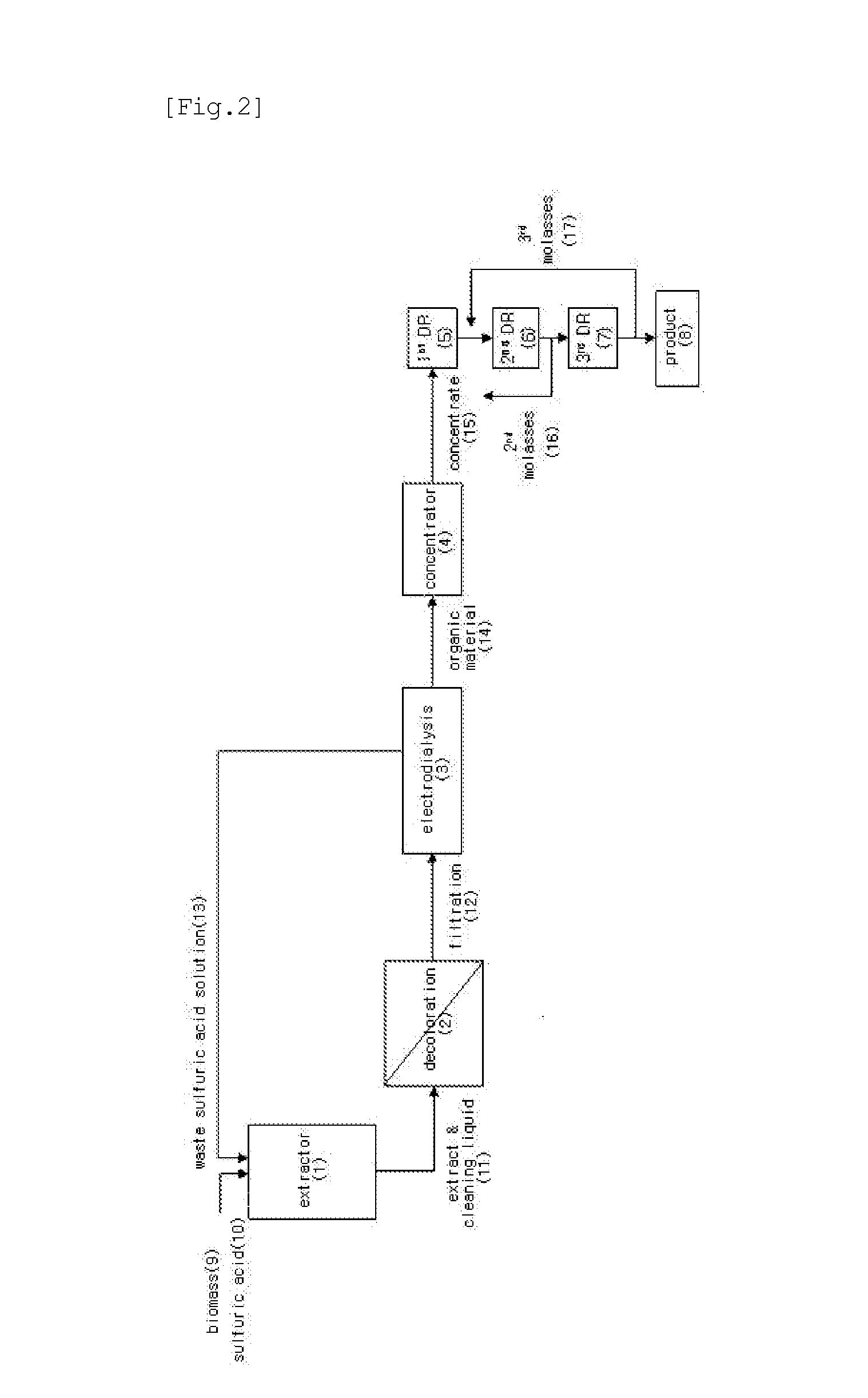Economic Process for Producing Xylose from Hydrolysate Using Electrodialysis and Direct Recovery Method
a technology of hydrolysate and economic process, applied in the direction of fluid pressure measurement, liquid/fluent solid measurement, peptide, etc., can solve the problems of increasing wastewater treatment cost, reducing device efficiency, and easy contamination of ion-exchange membranes, so as to reduce the burden of wastewater treatment, reduce production cost, and simplify the effect of process
- Summary
- Abstract
- Description
- Claims
- Application Information
AI Technical Summary
Benefits of technology
Problems solved by technology
Method used
Image
Examples
example 2
Production of High-Concentration Xylose by Countercurrent Extraction
[0030]The simplest extraction method is a repeated extraction with a pure solvent. However, in the present invention, countercurrent extraction was carried out in order to maximize soluble components from a raw material while obtaining a high-concentration extract.
[0031]When tropical fruit biomass and a sulfuric acid solution are allowed to react in an extractor for a predetermined time, they are separated into upper layer solution and lower layer slurry, which gradually move in opposite directions. In other words, a first extract (b) and a second extract (c), which consist of the solvent and the solute, moves in order through each column in a direction opposite to the solid phase, and during movement through each column, the solute is dissolved and extracted. FIG. 3 shows a flowchart of the countercurrent extraction process.
[0032]Specifically, the extractor consists of a stage-1 and a stage-2 extraction reactor. th...
example 3
Desalting Electrodialysis
[0035]Current efficiency and energy consumption of the acid hydrolysate produced by the countercurrent extraction process were examined in order to determine the possibility of separation between an organic material (sugar) and sulfuric acid conducted by desalting electrodialysis process of the present invention by means of the desalting rate of sulfuric acid and the loss rate of the organic material.
[0036]The decolorized and filtered reaction solution had a sugar concentration of 10-15 Brix and a pH of 1.5-2.5. The solution was maintained at a constant voltage of 40-70V using a DC power supply (120V, 30 A) and at a constant temperature of about 40-70° C. using a heat exchange coil. The solution was desalted at a flow rate of 6-8 L / min for 100-150 minutes until the conductivity reached 1,500 uS / cm or less.
[0037]Herein, the electrodialysis device has three compartments and the ion membrane was comprised of a strong acid cation exchange membrane and a strong b...
example 4
Measurement of Contamination Index of Ion Exchange Membrane
[0040]Under the conditions described in Example 3, the ion exchange capacity and performance of the membrane were measured as a function of the pH of the acid hydrolysate. As a result, at a pH of 1.5-2.5, decline in the ion exchange capacity and performance of the membrane was significantly low, indicating that the membrane was not substantially contaminated. The results of the measurement are shown in Table 4 below.
TABLE 4Contamination index of membraneIon exchangeIon exchangecapacity (L) ofperformance (L / m2-hr)membraneof membranepH of 0.8-1.2 (raw extract)608pH of 1.5-2.5300 or more30
PUM
| Property | Measurement | Unit |
|---|---|---|
| conductivity | aaaaa | aaaaa |
| pressure | aaaaa | aaaaa |
| temperature | aaaaa | aaaaa |
Abstract
Description
Claims
Application Information
 Login to View More
Login to View More - R&D
- Intellectual Property
- Life Sciences
- Materials
- Tech Scout
- Unparalleled Data Quality
- Higher Quality Content
- 60% Fewer Hallucinations
Browse by: Latest US Patents, China's latest patents, Technical Efficacy Thesaurus, Application Domain, Technology Topic, Popular Technical Reports.
© 2025 PatSnap. All rights reserved.Legal|Privacy policy|Modern Slavery Act Transparency Statement|Sitemap|About US| Contact US: help@patsnap.com



